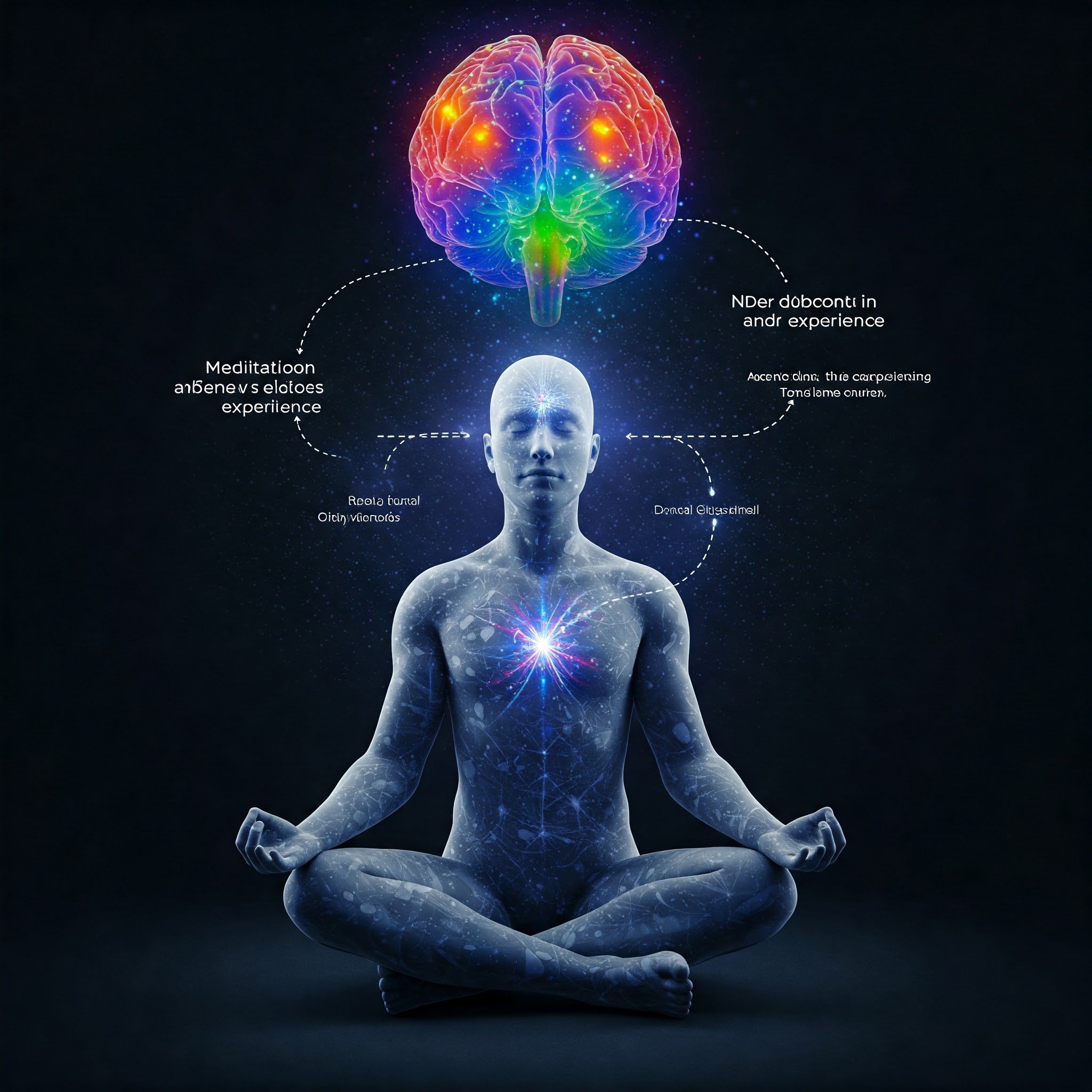Near-Death Experiences (NDEs) fascinate many people. These experiences often lead to profound changes in worldview, spirituality, and purpose. While NDEs commonly happen during life-threatening events, some people report similar experiences during meditation or deep mindfulness states.
Can meditation and mindfulness trigger experiences like NDEs? If so, what does that say about consciousness, life, and the afterlife? Let’s explore the connection.

What Are Meditation and Mindfulness?
Before we dive into how these practices relate to NDEs, let’s first understand what they involve.
- Meditation: Meditation helps people focus their minds. It often involves concentrating on a specific thought, object, or sensation. The goal is heightened awareness and deep relaxation. There are many types of meditation, including guided, transcendental, or breath-focused. Learn more about meditation here.
- Mindfulness: Mindfulness is a type of meditation. It focuses on being present in the moment without judgment. Mindfulness involves paying attention to your thoughts, feelings, and surroundings. Explore the benefits of mindfulness here.
Both practices are linked to well-being. They reduce stress and improve emotional regulation. For some, deep meditation and mindfulness lead to spiritual experiences that resemble aspects of NDEs.
How Meditation and Mindfulness Induce NDE-Like Experiences
While traditional NDEs often occur in life-threatening situations, meditation and mindfulness can sometimes lead to similar experiences. These experiences don’t involve literal death but can still create a feeling of separation from the body, deep peace, and connection to something larger.
1. Out-of-Body Experiences (OBEs)
Meditators sometimes report feeling as though they are floating above their bodies or viewing themselves from an external perspective. This sensation is known as an out-of-body experience (OBE). OBEs are a common feature of NDEs. Studies suggest meditation can increase the likelihood of experiencing OBEs. Learn more about OBEs here.
2. A Feeling of Oneness
Deep meditation can create a sense of unity with the universe. This feeling is similar to the oneness that many NDErs experience when they encounter a bright light or travel through a spiritual realm. For many, such experiences lead to a shift in perspective, focusing on love and interconnectedness.
3. Bright Lights or Visions
A common theme in NDEs is encountering a brilliant light, often seen as a tunnel or pathway to another realm. Meditators also report seeing bright lights. These lights are sometimes associated with feelings of warmth, comfort, and divine presence. Read more about the symbolism of light in spiritual experiences.
4. Timelessness and Eternality
In deep meditation, time can seem to disappear. Many individuals report experiencing an eternal moment. This sense of timelessness is also a key element of NDEs. Individuals in NDEs often feel as though they are outside the bounds of time and space. Discover more about timelessness in spirituality here.
What Does This Mean for Consciousness?
The link between meditation, mindfulness, and NDE-like experiences raises key questions about consciousness. Some researchers believe that meditation can access altered states of consciousness. These states may allow people to transcend their usual boundaries and experience phenomena often linked with death.
While we don’t fully understand the mechanics behind NDEs and meditation-induced experiences, these events suggest that consciousness might not rely solely on the brain. Learn more about consciousness here.
The Transformative Power of Meditation and Mindfulness After NDEs

For people who have experienced NDEs, meditation and mindfulness can help with integration. Many NDErs feel compelled to connect with the profound truths they discovered during their experience. Meditation offers a tool to reconnect with these insights and continue their spiritual journey.
Meditation can also help process NDEs, address fears, and strengthen positive feelings like love and empathy. Explore how meditation aids healing after trauma here.
Conclusion
Meditation and mindfulness are not only useful for well-being; they can also trigger experiences similar to those reported in NDEs. These experiences—whether through separation from the body, bright lights, or oneness—offer a glimpse into deep, spiritual truths.
By practicing meditation and mindfulness, people can explore their consciousness and potentially connect with greater universal truths. Both practices serve as powerful reminders of our potential to uncover deeper dimensions of life and spirituality.

